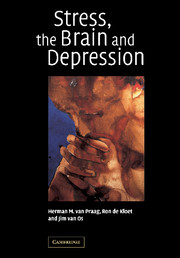Book contents
- Frontmatter
- Contents
- Preface
- 1 Diagnosing depression
- 2 Traumatic life events: general issues
- 3 Life events and depression: preliminary issues
- 4 Life events and depression: is there a causal connection?
- 5 Genetics of depression
- 6 Gene–environment correlation and interaction in depression
- 7 Monoamines and depression
- 8 Stress hormones and depression
- 9 Stress, the brain and depression
- Epilogue
- Name index
- Subject index
3 - Life events and depression: preliminary issues
Published online by Cambridge University Press: 15 October 2009
- Frontmatter
- Contents
- Preface
- 1 Diagnosing depression
- 2 Traumatic life events: general issues
- 3 Life events and depression: preliminary issues
- 4 Life events and depression: is there a causal connection?
- 5 Genetics of depression
- 6 Gene–environment correlation and interaction in depression
- 7 Monoamines and depression
- 8 Stress hormones and depression
- 9 Stress, the brain and depression
- Epilogue
- Name index
- Subject index
Summary
The agenda
Can traumatic life events cause depression? Intuitively one tends to answer this question in the affirmative. After all, adverse happenings will lower one's spirit and generate feelings of sadness and frustration. One step further, so it seems, and one enters the realm of depression. Such inferences take it for granted that:
The border between distress and depression is well-established.
The term ‘life event’ is well delineated.
Life events and the emotional impact they exercise, are properly measurable.
It has been made clear what in this context is meant by the term causation.
We will verify whether these preconceived notions are justified.
Border issues
Distress versus depression
The border between depression and nondepression seems well demarcated. Brown & Harris (1989) introduced the concept of ‘caseness’, defining in symptomatological terms a depression that could definitely be conceived as a disorder, a pathological state. The concept was later adopted by Spitzer et al. (1978) in developing the Research Diagnostic Criteria and by the composers of the DSM–III and ICD–X. It has, however, not resolved the border issue (Pincus et al., 1992). The problem is not so much defining a ‘case’, but lies in defining the non-case, and indicating where the border lies between distress and worrying on the one hand and ‘case’- depression on the other.
- Type
- Chapter
- Information
- Stress, the Brain and Depression , pp. 24 - 37Publisher: Cambridge University PressPrint publication year: 2004



